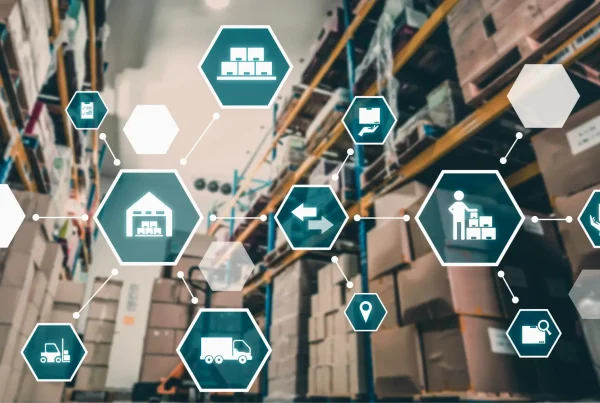Setting the right price is not as simple as it seems. It’s more than finding a price that customers are willing to pay; it’s also about aligning with your company’s goals. Nailing the right price point should significantly boost sales, marketing efforts, and overall growth, ultimately leading to increased profits.
An inefficient and ineffective approach to pricing can lead to significant profit and margin losses. Traditional methods, relying on past experiences and consistent trends, are no longer sufficient in today’s fast-paced retail world. A more agile, informed, and data-driven approach is crucial for making the right decisions and achieving retail success.
As we stepped into 2023, only 30 percent of US retailers felt confident about maintaining positive margins and profits. It’s no wonder, given that many consumers are now focusing on purchasing only the essentials.
Let’s Understand How Retail Price Optimization Software Works
AI-based price optimization isn’t just about setting a price. It’s about using data to make informed decisions that hit the sweet spot between attracting customers and maximizing profits. Instead of guessing, businesses can analyze customer behavior and market trends to find the most effective price point for their product or service.
It’s all about finding the right balance between your key performance indicators (KPIs) and the different stages of pricing. In the fascinating world of price optimization, you’ve got two main paths you can stroll down: the high-tech world that embraces machine learning and the traditional method that doesn’t.
The high-tech world uses predictive analytics to gauge how customers will react to different prices and then adjusts those prices to meet the company’s goals. Machine learning handles ever-larger data sets and considers an array of factors to predict how price changes will affect the market.
The objective of retail price optimization software is to strike a delicate balance between profitability, perceived value, and consumer demand. Given that product desirability and feature enhancements are often outside a company’s immediate control, the initial step towards achieving this equilibrium involves establishing the initial price point for goods or services and any applicable discounts or promotional offerings.
Optimize Three Types of Pricing with Pricing Software
1. Initial Prices
The initial, or base, price acts as an indicator for potential customers, helping them determine whether the product or service warrants their investment. Therefore, initial prices should be carefully calibrated to reflect the inherent demand for the product prior to the application of any discounts or promotions.
This approach is particularly effective for products and services with relatively stable market positions, such as groceries, office supplies, or SaaS offerings.
2. Discounted Prices
In sales, discerning the most effective strategy to attract new customers is crucial. Offering products at a reduced price, or even providing a freemium version, can be a highly effective means of attracting new clientele (notably, customers acquired through freemium offerings often cost significantly less to acquire than those opting for paid services directly).
3. Promotional Prices
It’s essential to consider which promotional strategies will most benefit both your business and your clientele. Will reduced prices translate into increased profits, or is it more advantageous to maintain the initial price? What is the optimal discount percentage below the initial price? How long will a product likely remain on the market at a given price? Strategically optimizing promotional prices can significantly enhance sales of newly launched products or promotional bundles.
Machine Learning-Based Retail Pricing Solutions
Retail pricing solutions rely on complex algorithms to understand how demand changes with different prices. Over time, these algorithms learn from past data and various inputs, adjusting to patterns without needing explicit programming.
Price optimization tools let businesses consider a range of factors including:
- Competition
- Weather
- Seasonality
- Special events and holidays
- Macroeconomic variables
- Operating costs
- Warehouse information
With this data at their fingertips, businesses can craft the perfect pricing strategy, adjusting initial, discount, and promotional prices to hit their objectives.
As we peer into the future of retail, machine learning stands tall as a crucial tool. It not only helps businesses make sense of big data but also allows them to adapt to market changes swiftly. The algorithms learn from historical data and different inputs, freeing up valuable time for businesses.
And that’s not all. AI pricing software now marries machine learning with forecasting algorithms, giving businesses the power to predict changes in revenue and profit, adapt to various environments, and make dynamic decisions. With such AI pricing software coming into the picture, you can also use software that can help you in forecasting SKUs at their stores and maintaining their records efficiently.
The future of price optimization is here—and it’s smarter and more powerful than ever.
- Zoom in on The Right KPIs: Each product has its own journey and performance metrics. Kick-off by pinpointing the right Key Performance Indicators (KPIs) for each item from start to finish. Regularly keep tabs, assess, and tweak as needed. Setting monthly benchmarks, for instance, ensures you’re on top of the game, preventing any surprise margin hits. Remember, what works in one store might not fly in another.
- Understand Your KVIs’ Price Elasticity: Price elasticity can make or break your profit. It’s about nailing that sweet spot price that makes your key value items fly off the shelves. Some products are like elastic bands. Drop the price a tad, and off they go.
- Know Your Product Lifecycle: A product’s lifecycle is akin to a roller coaster ride. What goes up must come down. Understanding this cycle is crucial for timing your markdowns to perfection. That’s where AI comes into play. It sifts through mountains of data to forecast when your product will hit its peak and when it’s time to start thinking of markdowns to keep those profits rolling in.
- Embrace Scenario-Based Planning: Ditch the one-size-fits-all markdown method. Different products react in their unique ways to markdowns. It’s about finding that golden scenario that aligns with your product’s price elasticity, lifecycle, and other nuances.
- Rely on Continuous Demand Forecasting: Accurate demand predictions are the lifeblood of retail profitability. It is where AI and machine learning take center stage. They crunch numbers from the past and present to serve up precise forecasts that are constantly updated, ensuring you’re always in the know.
Conclusion: Why You Need AI-Based Price Optimization
The evolution of price optimization is a testament to human ingenuity and the incredible power of technology. As we continue to harness the strengths of machine learning and other advanced retail pricing tools, the future of price optimization tools looks brighter and more promising than ever.
From the days of simple bartering to today’s digital era, price optimization has transformed into a refined system that delivers precise analysis and effective results. This advanced system empowers retailers with the ability to dissect customer reactions to various pricing strategies, enabling them to pinpoint the perfect price point for their products and services.
It’s like having a secret map that guides you to the treasure trove of customer satisfaction and business profitability. With retail pricing tools, businesses can move into a myriad of essential pricing variables, from historical purchase data to seasonal fluctuations, inventory levels, and even what the competitors are up to in terms of pricing.
That’s why it’s no surprise that a growing number of retailers are jumping on the machine learning bandwagon. The fusion of price optimization and machine learning is not just a trend. It’s a revolution that’s changing the face of retail.
Take the Next Step
Tackling pricing and markdowns can be challenging. Simplify the process and maximize your profits with our retail price optimization software. Check out our retail pricing solutions today.
- Impact Analytics PriceSmart™: Transform your pricing strategy with our cutting-edge retail price optimization software. Navigate the complete pricing lifecycle effortlessly and arm yourself with precise, market-adaptive pricing strategies. Say goodbye to human errors and substantially enhance your pricing accuracy.
- Impact Analytics ForecastSmart™: Take advantage of advanced machine learning algorithms to generate precise forecasts for every SKU, at any store, style, or hierarchy level, throughout their entire lifecycle.





